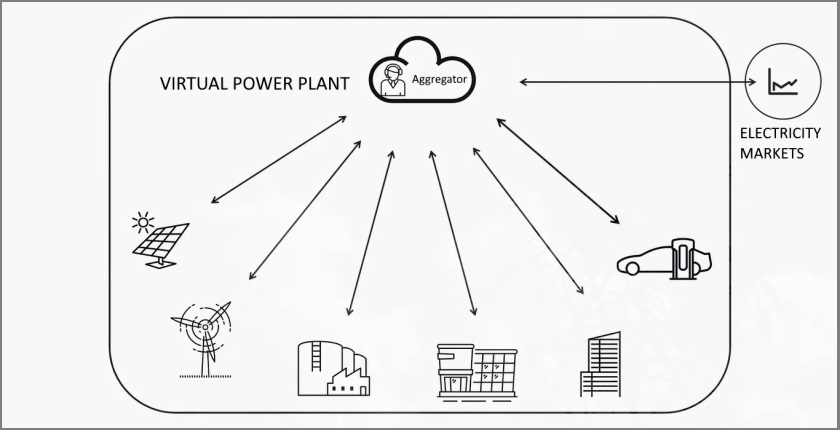
Photo: KOER – Balkan Green Energy News
Technology developer KOER is signing on end-users after it launched the first virtual power plant in Croatia. Such platforms unify electricity sources, storage units and consumers to equalize the production and consumption side.
Croatian Transmission System Operator (HOPS) and KOER reached an agreement on the launch of the first virtual power plant in Croatia. KOER, based in Zagreb, said it has developed both the hardware and software by itself and that it became a link between its end-users and the domestic electricity market.
OIV, which runs infrastructure for the transmission and transfer of digital signals and distribution of content, said it made 1 MW in total from the reserve generators at its towers available to KOER for a fee. It will get income from reserving the capacity and from activating it as needed, in case of power outages in the network.
Telecommunication tower operator OIV will get income from reserving and from activating its spare power generator capacity
Antun Andrić from HOPS explained that the institution that he represents hired KOER for ancillary grid services with a goal to manage the electric power system more optimally and balance the potential disparities between the production and consumption side, as they always have to be in equilibrium.
“The entire system is quickly being decentralized. Primarily in the sense of installing renewables, but also the electrification trend in transportation and other sectors,” he stressed. Andrić added aggregation develops competition and that it cuts balancing costs.
Cloud-based systems help to achieve supply-demand equilibrium, lowering balancing costs
Transmission system operators usually have a legal obligation to secure contracts for the provision of reserves for flexibility. In the new power market, where the production from wind and solar power plants is unpredictable due to weather, balancing makes a large portion of costs.
Of note, it will be one of the most important topics at the upcoming conference Serbian Companies on Changing Power Market, which Balkan Green Energy News scheduled to be held in Belgrade, Serbia, on February 22.
Director of KOER Marko Lasić said the virtual power plant is a new factor, unifying sources, consumers and storage units and offering its end-users the opportunity to become active participants in the electricity market. “The facility consists of an aggregator, which manages it, and end-users anywhere in the network. They make a part of their production or consumption available,” he asserted.
A virtual power plant consists of an aggregator, which manages it, and distributed power producers and consumers
Any entity that can control its output or how much power it spends can become a partner, in a range between 100 kW and several dozen megawatts, according to Lasić. He said the end-user must be capable of cutting consumption immediately, upon request.
Virtual power plants are cloud-based networks that enable users to sell their surplus electricity. Both the producers and consumers can form groups or clusters within the facility’s system to lower expenses. In the energy transition, prosumers are becoming a prominent factor as they have the ability to produce, store and consume electricity, making balancing more complex.
KOER planning to introduce increasing consumption as service
KOER said its role in the market is similar to how services like Uber or Airbnb make it possible for vehicle or property owners to monetize on their assets. Seen from the point of the electric power system, having end-users that can cut consumption upon demand is equivalent to having an actual power plant, usually a gas-fired one, that can cover the lack of electricity, the company added.
Its virtual power plant currently provides HOPS with the service of consumption reduction. KOER, a spin-off of Klimaoprema, is specialized in innovative energy solutions. It said it would later roll out the service of increasing consumption in cases of an unforeseen rise in supply, which can also cause issues for the electric power system.
For instance, a shopping mall chain can get income as a partner by including its heating, ventilation and air conditioning, large power-consuming units and electricity sources, according to the virtual power plant operator.
Virtual power plants are capable of managing electricity from a pool of distributed sources, particularly renewables and storage units such as batteries. The technology makes it possible for electricity traders to optimize their business as they can, say, combine wind and hydropower plants with stable sources of power such as geothermal units.


















Be the first one to comment on this article.